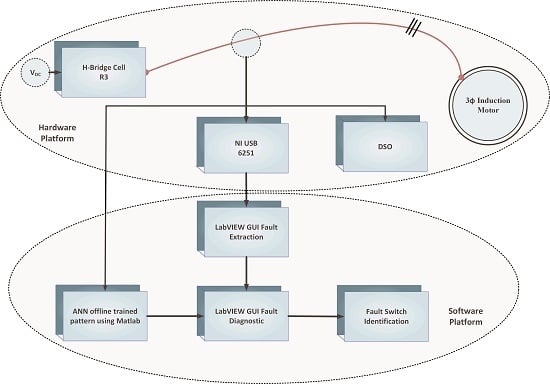Fault Investigation in Cascaded H-Bridge Multilevel Inverter through Fast Fourier Transform and Artificial Neural Network Approach
Abstract
:1. Introduction
2. Structure of H-Bridge Multilevel Inverter
3. Fault Analysis of Output Voltage and Current
4. Concept of Fast Fourier Transform and Feature Extraction Process
5. Structure of Fault Diagnostic System
5.1. Simulation Results at open circuit Fault
5.2. Simulation Results at short circuit Fault
6. Experimental Validation
6.1. Feature Extraction Analysis Using LabVIEW
6.2. Real-Time Fault Diagnosis Results from LabVIEW-ANN Approach
7. Conclusions
Author Contributions
Funding
Conflicts of Interest
References
- Zheng, Z.; Wang, K.; Xu, L.; Li, Y. A hybrid cascaded multilevel converter for battery energy management applied in electric vehicles. IEEE Trans. Power Electron. 2014, 29, 3537–3546. [Google Scholar] [CrossRef]
- Javad, G.; Reza, N. Analysis of Cascaded H-Bridge Multilevel Inverter in DTC-SVM Induction Motor Drive for FCEV. J. Electr. Eng. Technol. 2013, 8, 304–315. [Google Scholar]
- Banaei, M.R.; Salary, E. A New Family of Cascaded Transformer Six Switch Sub-Multilevel Inverter with Several Advantages. J. Electr. Eng. Technol. 2013, 8, 1078–1085. [Google Scholar] [CrossRef] [Green Version]
- Ui-Min, C.; Lee, K.-B.; Frede, B. Diagnosis and tolerant strategy of an open-switch fault for T-type three-level inverter systems. IEEE Trans. Ind. Appl. 2014, 50, 495–508. [Google Scholar] [CrossRef]
- Chen, A.; Hu, L.; Chen, L.; Deng, Y.; He, X. A multilevel converter topology with fault-tolerant ability. IEEE Trans. Power Electron. 2005, 20, 405–415. [Google Scholar] [CrossRef]
- Pablo, L.; Josep, P.A.; Thierry, M.; Jose, R.; Salvador, C.; Frédéric, R. Survey on fault operation on multilevel inverter. IEEE Trans. Ind. Electron. 2010, 57, 2207–2218. [Google Scholar]
- Ma, M.; Hu, L.; Chen, A.; He, X. Reconfiguration of carrier-based modulation strategy for fault-tolerant multilevel inverters. IEEE Trans. Power Electron. 2007, 22, 2050–2060. [Google Scholar] [CrossRef]
- Diallo, D.; Benbouzid, M.H.; Hamad, D.; Pierre, X. Fault detection and diagnosis in an induction machine drive—A pattern recognition approach based on concordia stator mean current vector. IEEE Trans. Energy Conv. 2005, 20, 512–519. [Google Scholar] [CrossRef] [Green Version]
- Estima, J.; Cardoso, A.M. A new algorithm for real-time multiple open-circuit fault diagnosis in voltage-fed PWM motor drives by the reference current errors. IEEE Trans. Ind. Electron. 2013, 60, 3496–3505. [Google Scholar] [CrossRef]
- Khan, M.A.S.K.; Rahman, M.A. Development and implementation of a novel fault diagnostic and protection technique for IPM motor drives. IEEE Trans. Ind. Electron. 2009, 56, 85–92. [Google Scholar] [CrossRef]
- Lezana, P.; Aguilera, R.; Rodriguez, J. Fault detection on multicell converter based on output voltage frequency analysis. IEEE Trans. Ind. Electron. 2009, 56, 2275–2283. [Google Scholar] [CrossRef] [Green Version]
- Masrur, M.A.; Chen, Z.; Murphey, Y. Intelligent diagnosis of open and short circuit faults in electric drive inverters for real-time applications. IET Power Electron. 2010, 3, 279–291. [Google Scholar] [CrossRef]
- Surin Khomfoi, S.; Tolbert, L.M. Fault diagnostic system for a multilevel inverter using a neural network. IEEE Trans. Power Electron. 2007, 22, 1062–1069. [Google Scholar] [CrossRef]
- Surin Khomfoi, S.; Tolbert, L.M. Fault diagnosis and reconfiguration for multilevel inverter drive using AI-based techniques. IEEE Trans. Ind. Electron. 2007, 54, 2954–2968. [Google Scholar] [CrossRef]
- Sivakumar, M.; Parvathi, R.M.S. Diagnostic Study of Short-Switch Fault of Cascaded H-Bridge Multilevel Inverter using Discrete Wavelet Transform and Neural Networks. Int. J. Appl. Eng. Res. 2014, 9, 10087–10106. [Google Scholar]
- Hochgraf, C.; Lasseter, R.; Divan, D.; Lipo, T.A. Comparison of multilevel inverters for static VAR compensation. In Proceedings of the Conference Record of the IEEE Industry Application Society Annual Meeting, Denver, CO, USA, 2–6 October 1994; pp. 921–928. [Google Scholar]
- Kastha, D.K.; Bose, B.K. Investigation of fault modes of voltage-fed inverter system for induction motor drive. IEEE Trans. Ind. Appl. 1994, 30, 1028–1038. [Google Scholar] [CrossRef]


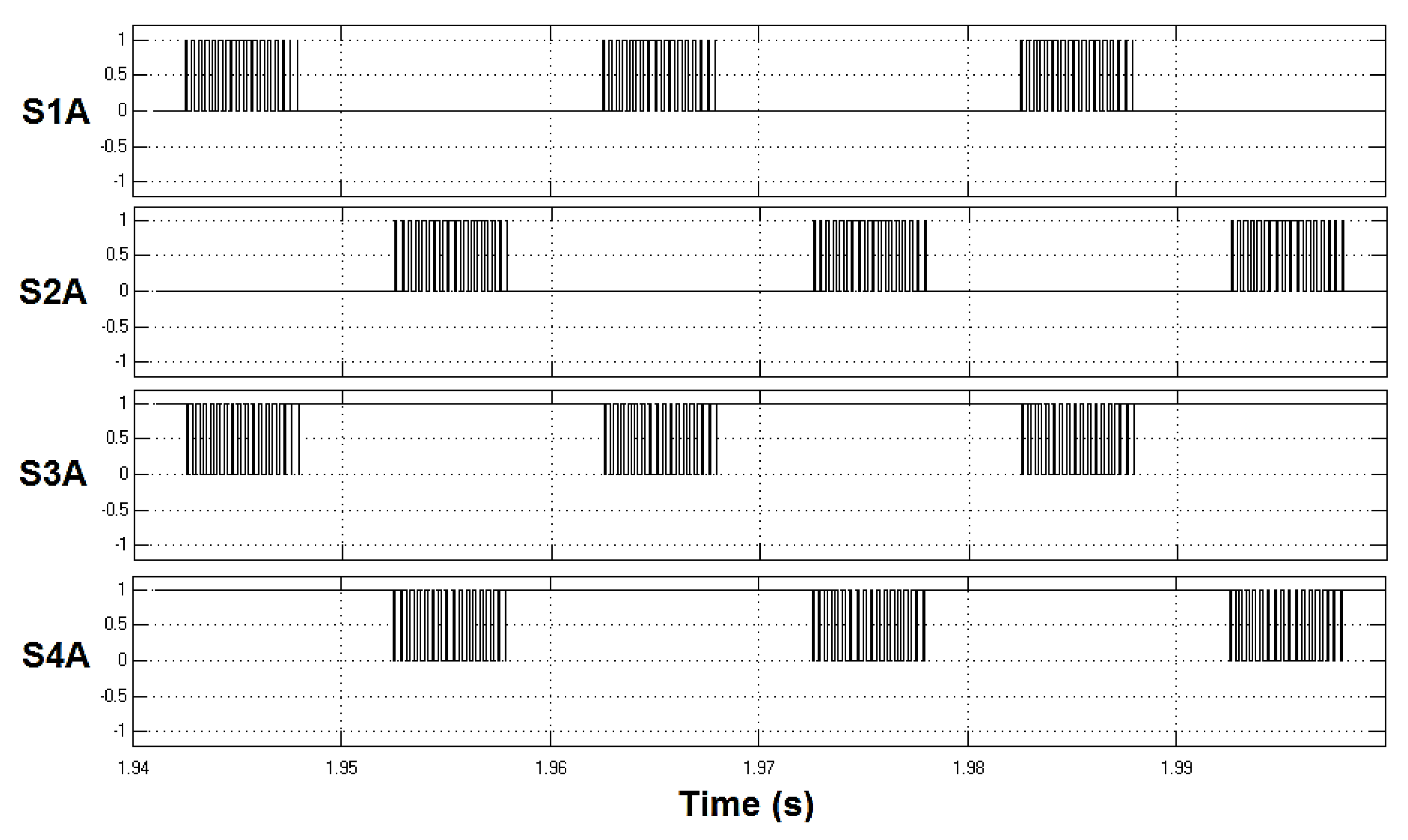
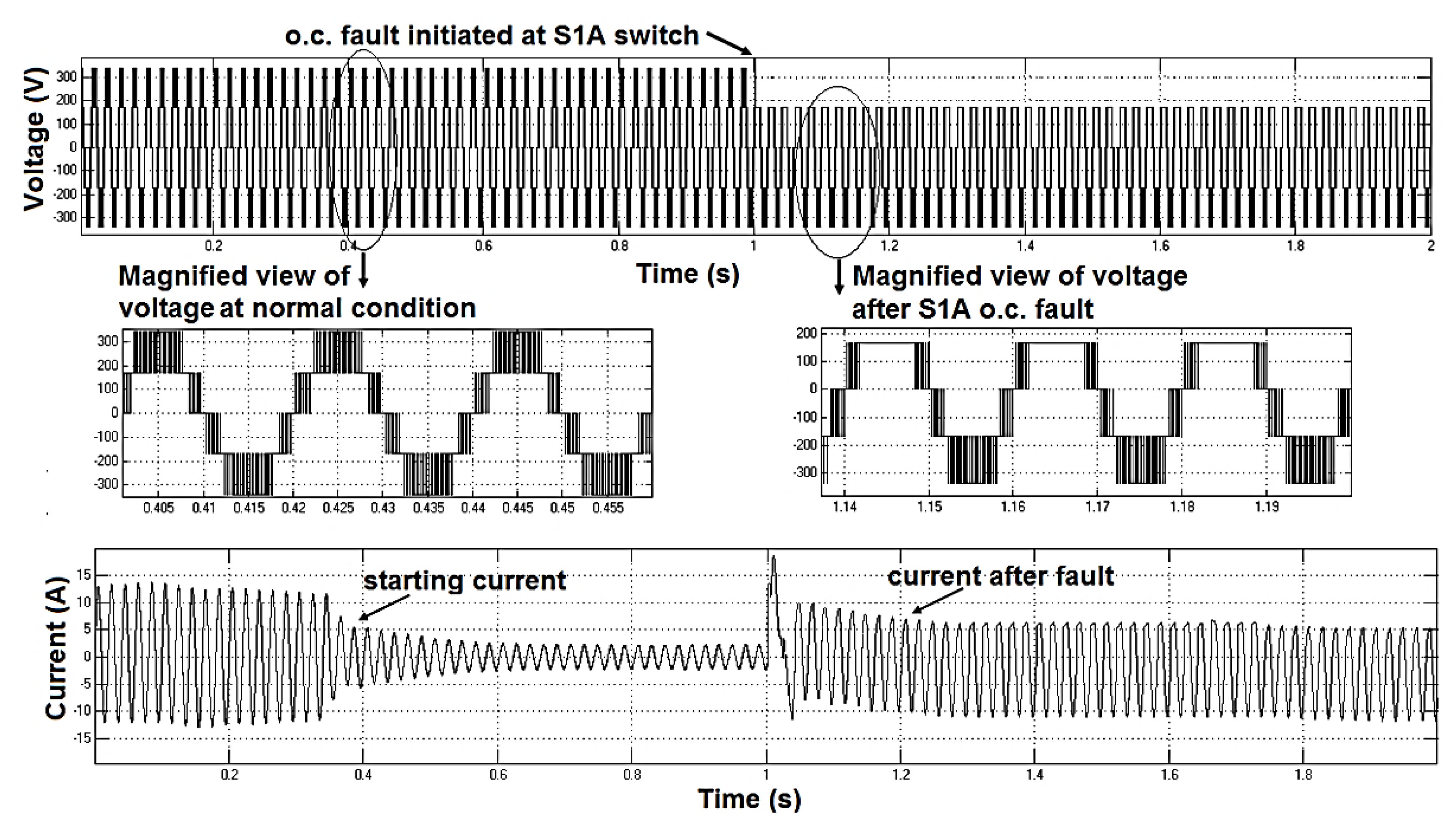


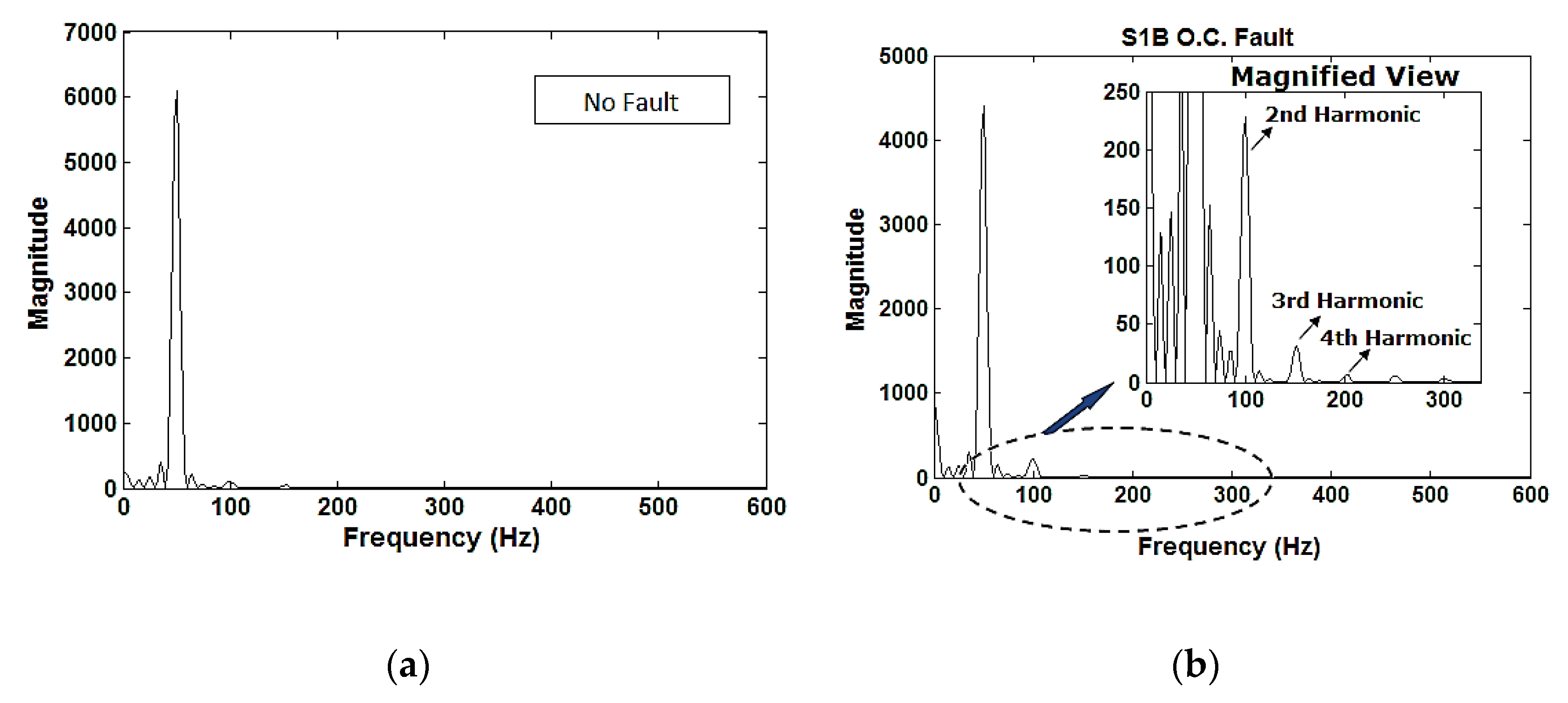
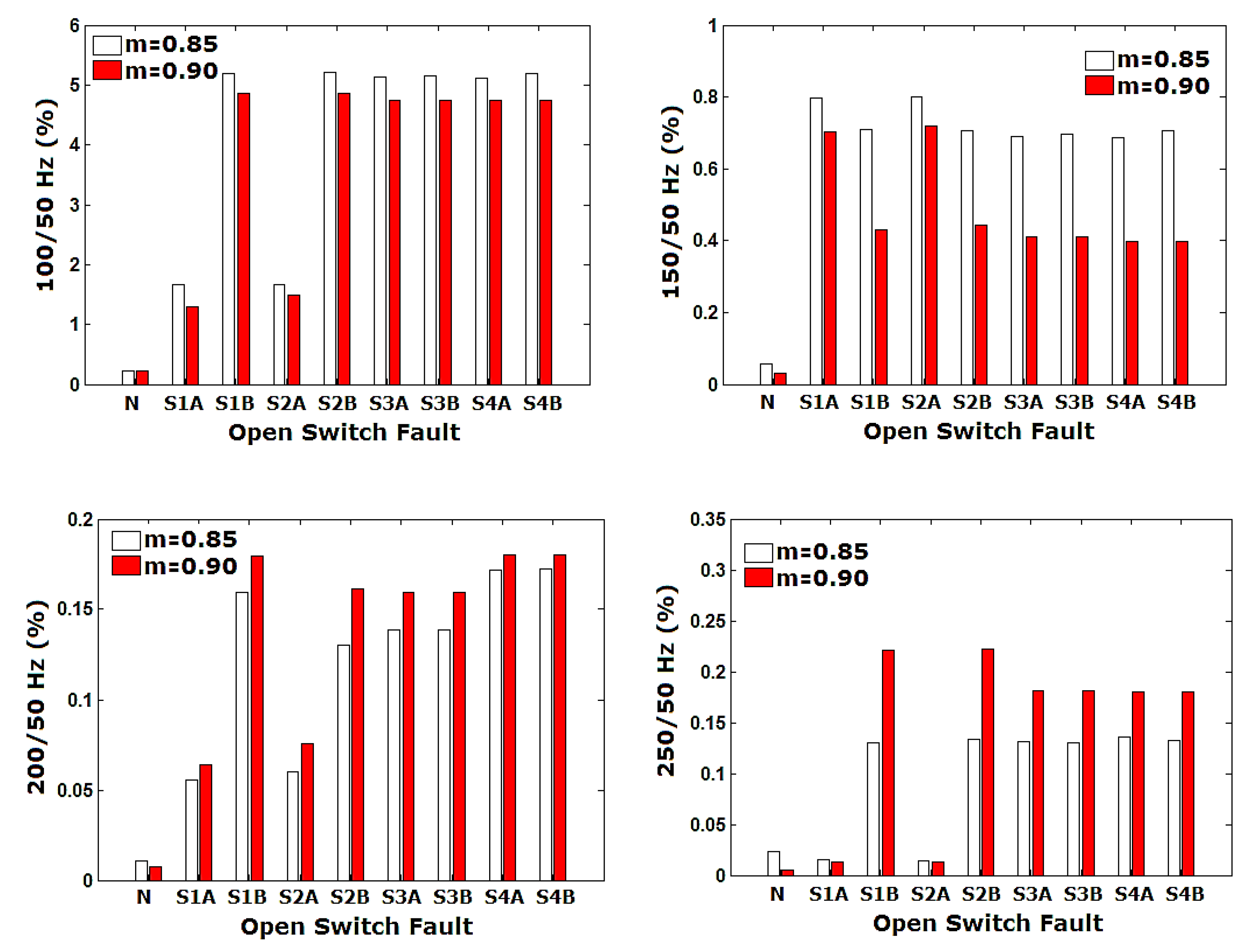
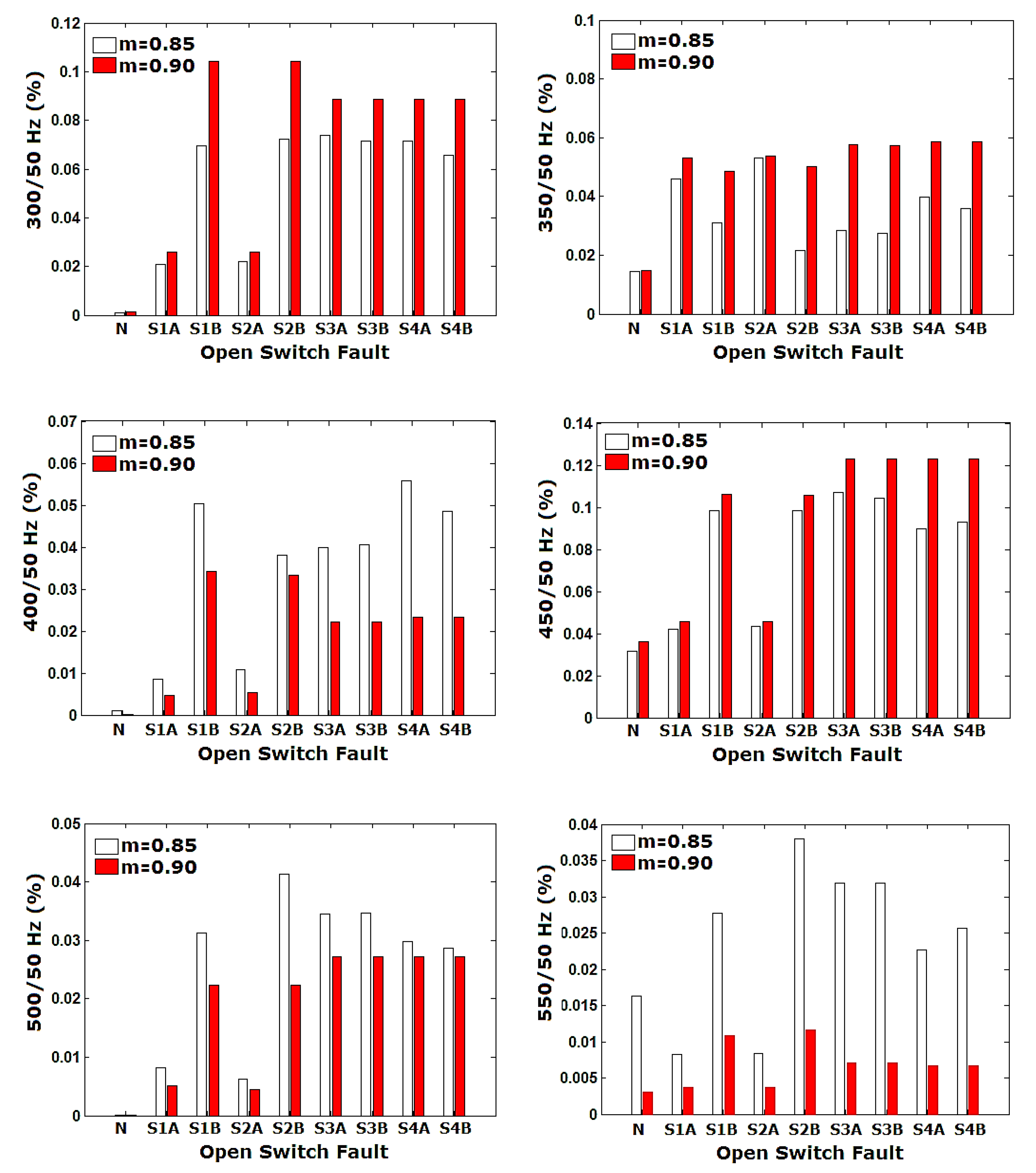


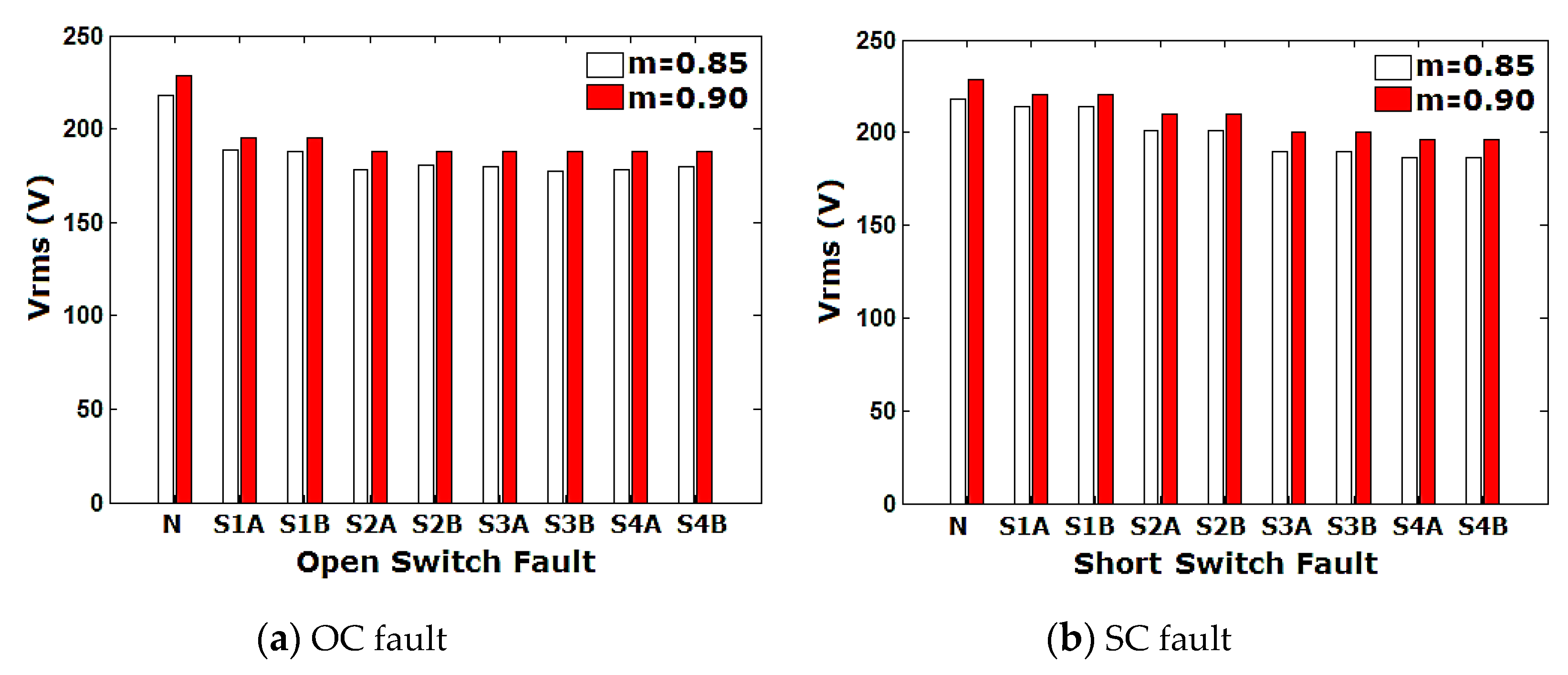

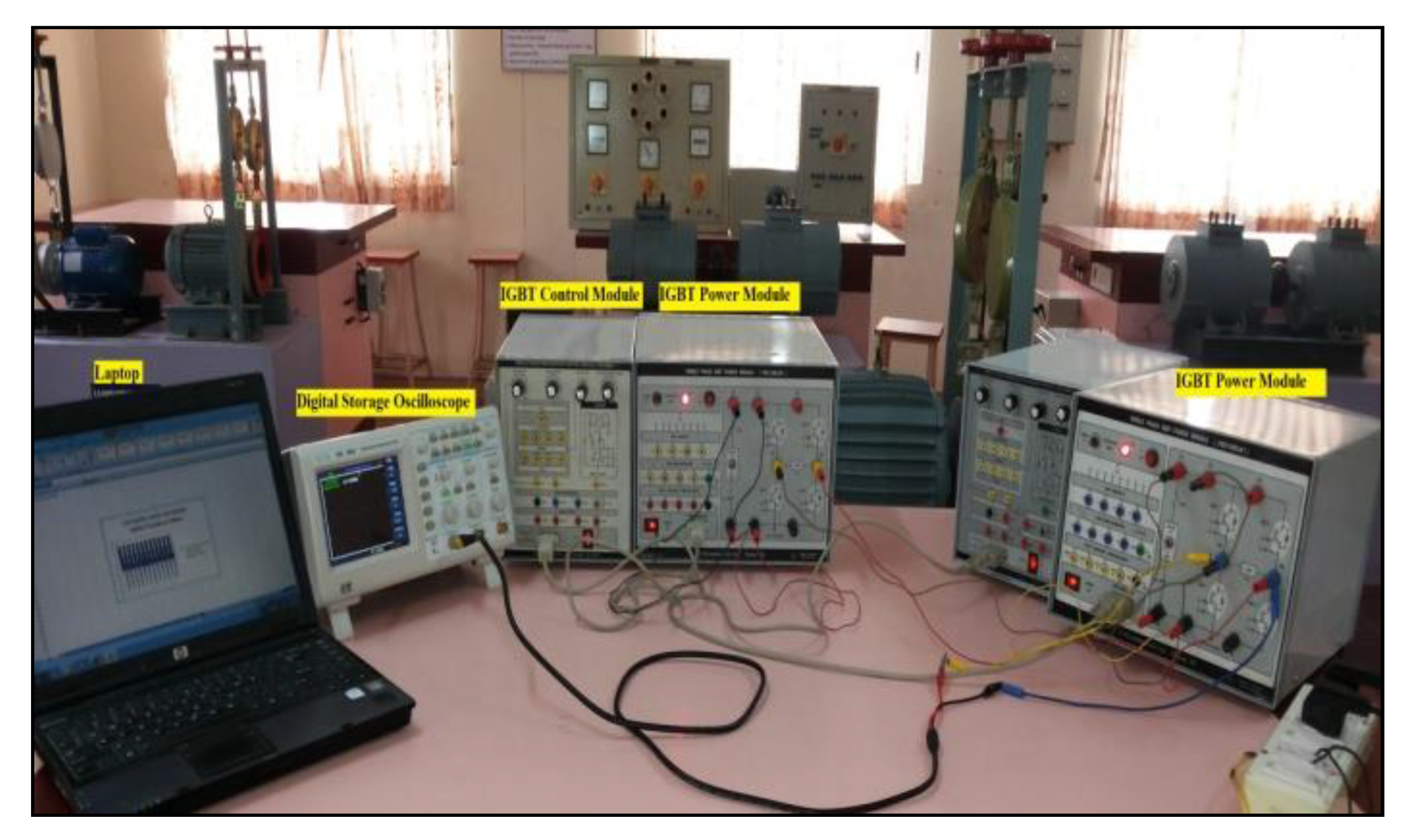
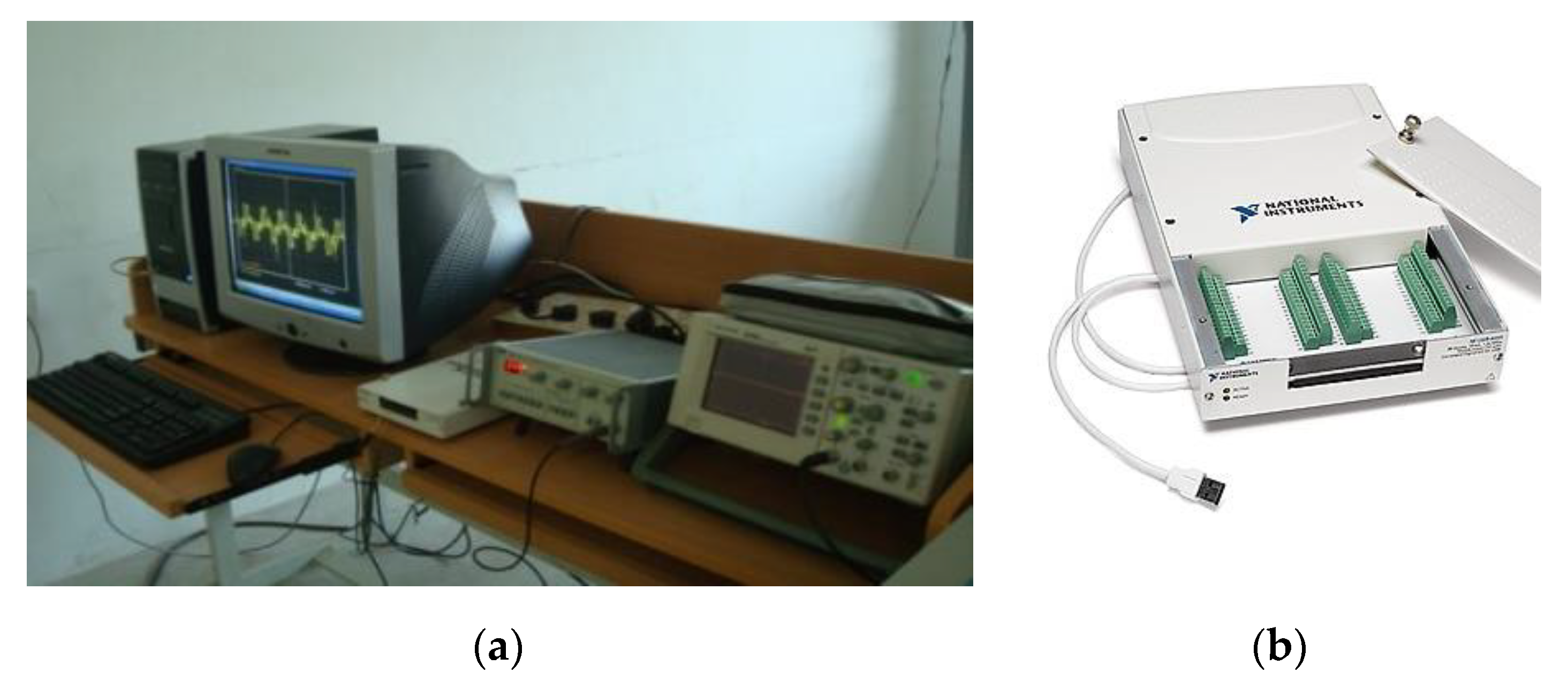
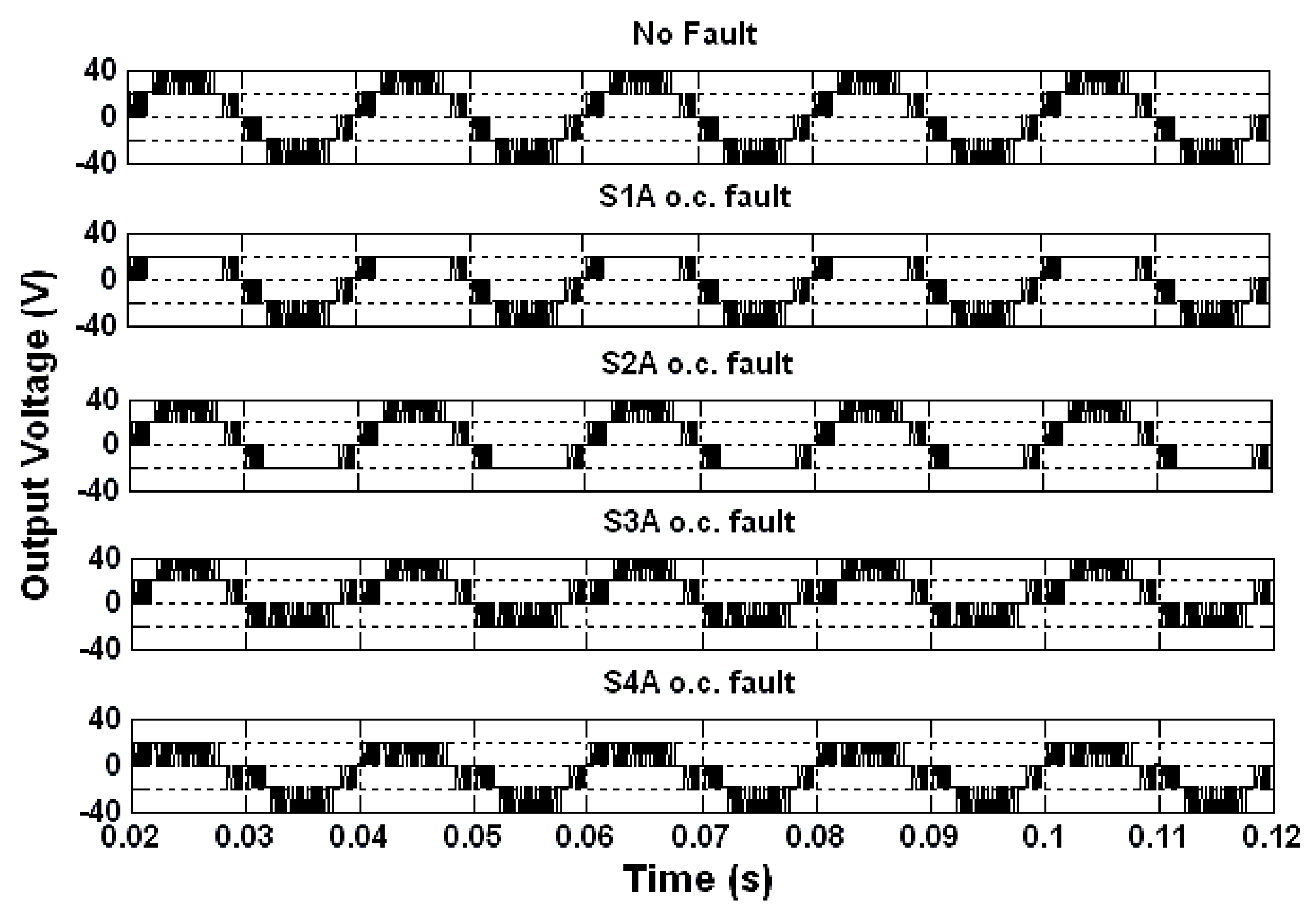
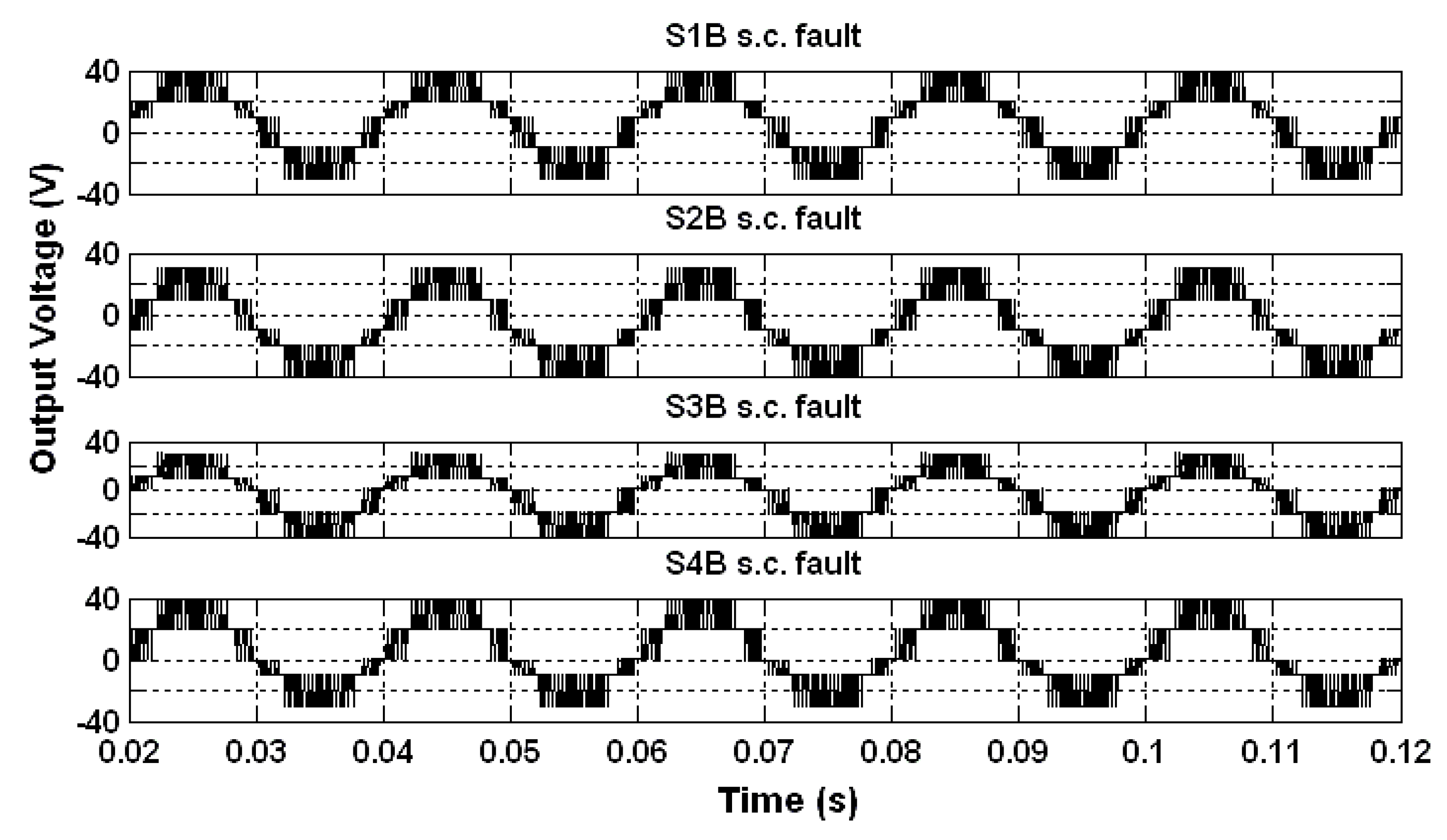
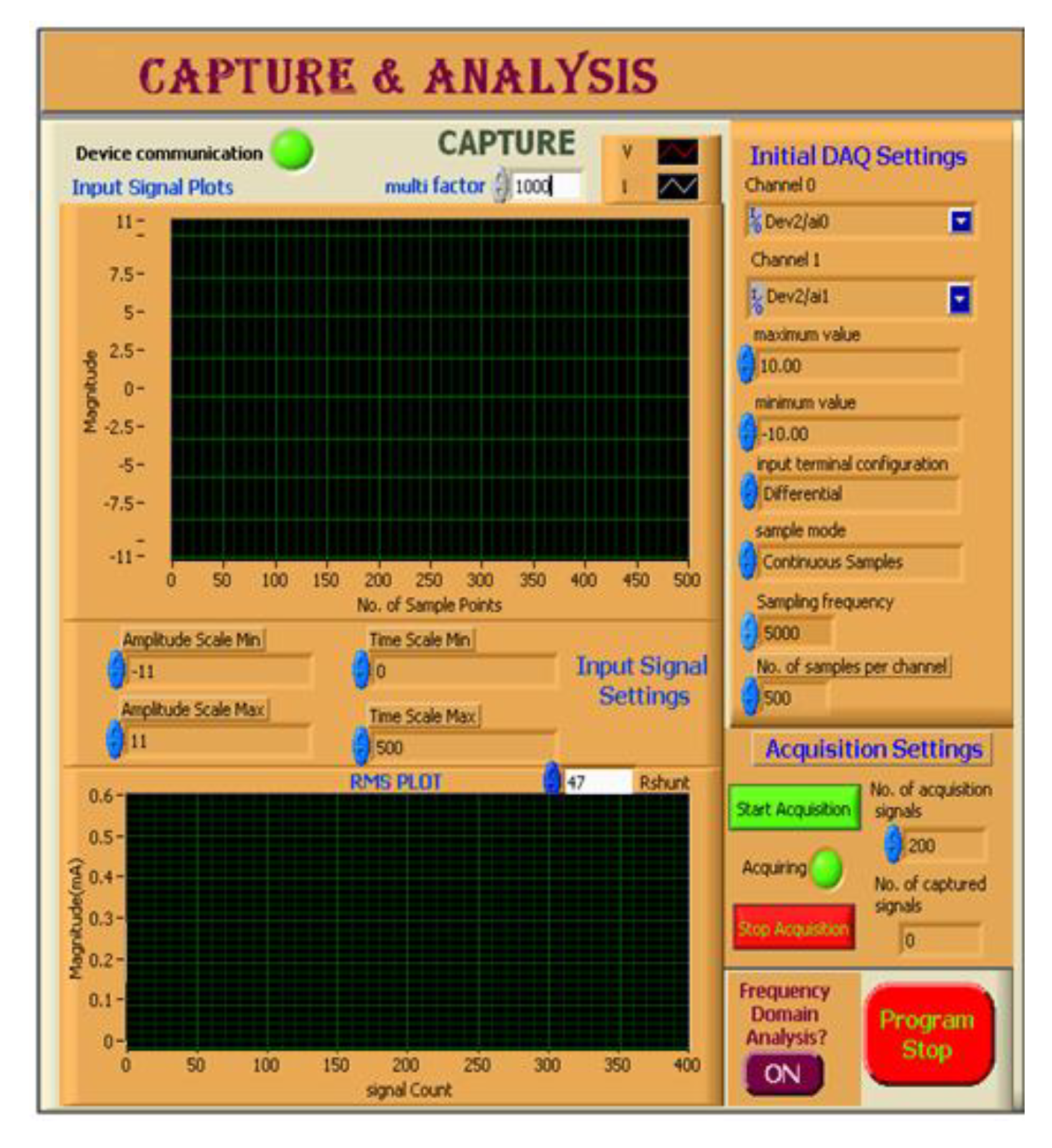
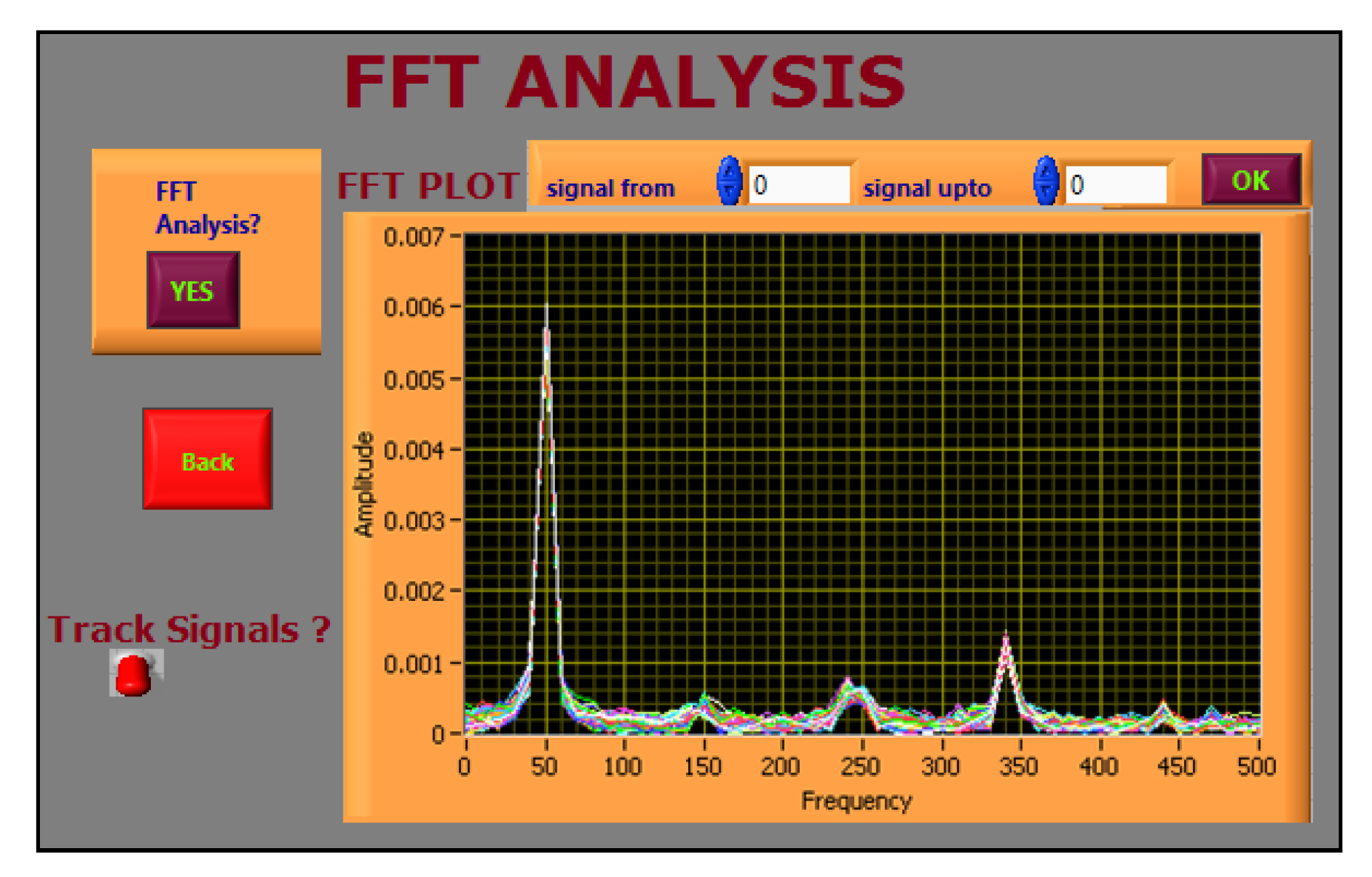

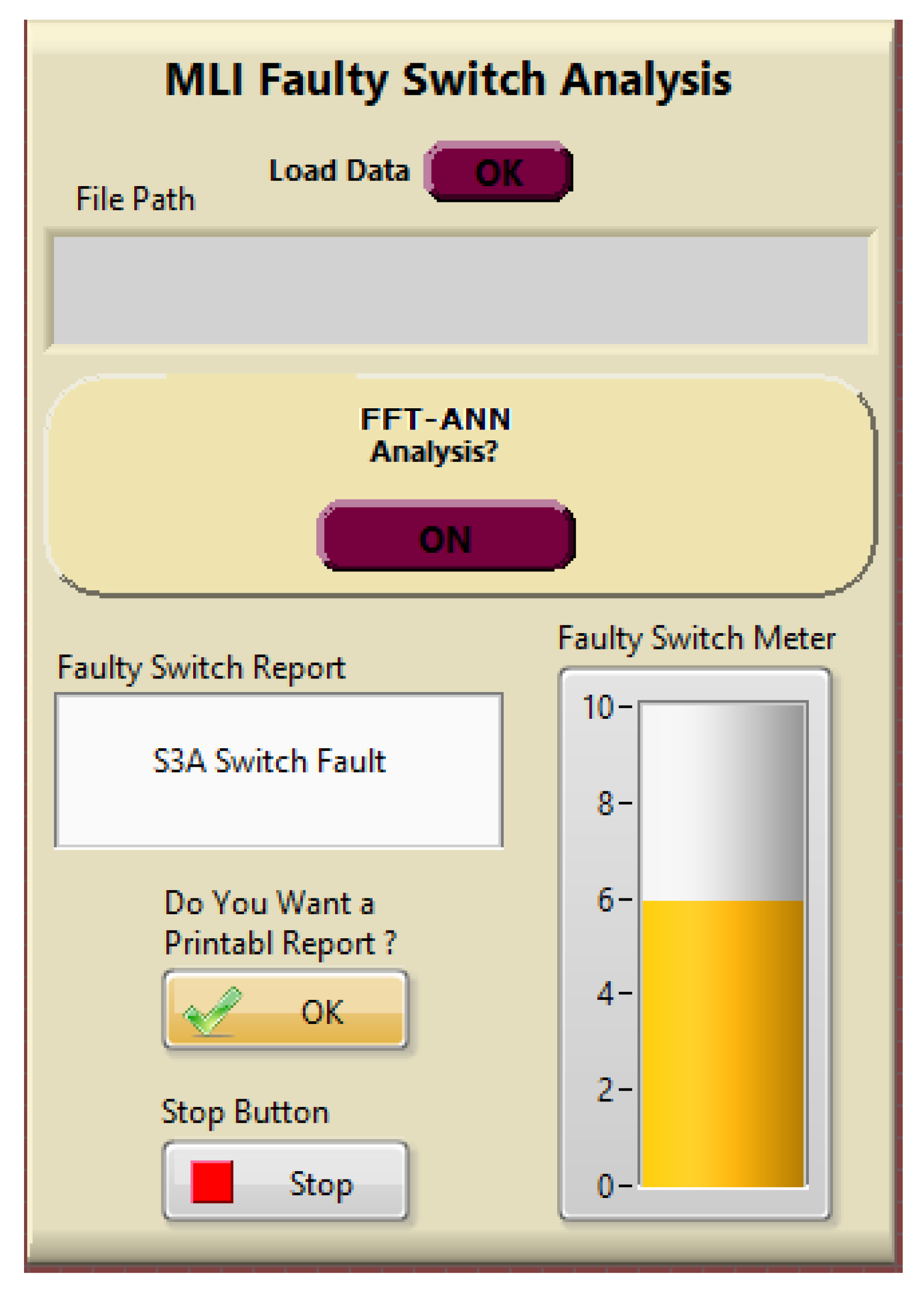
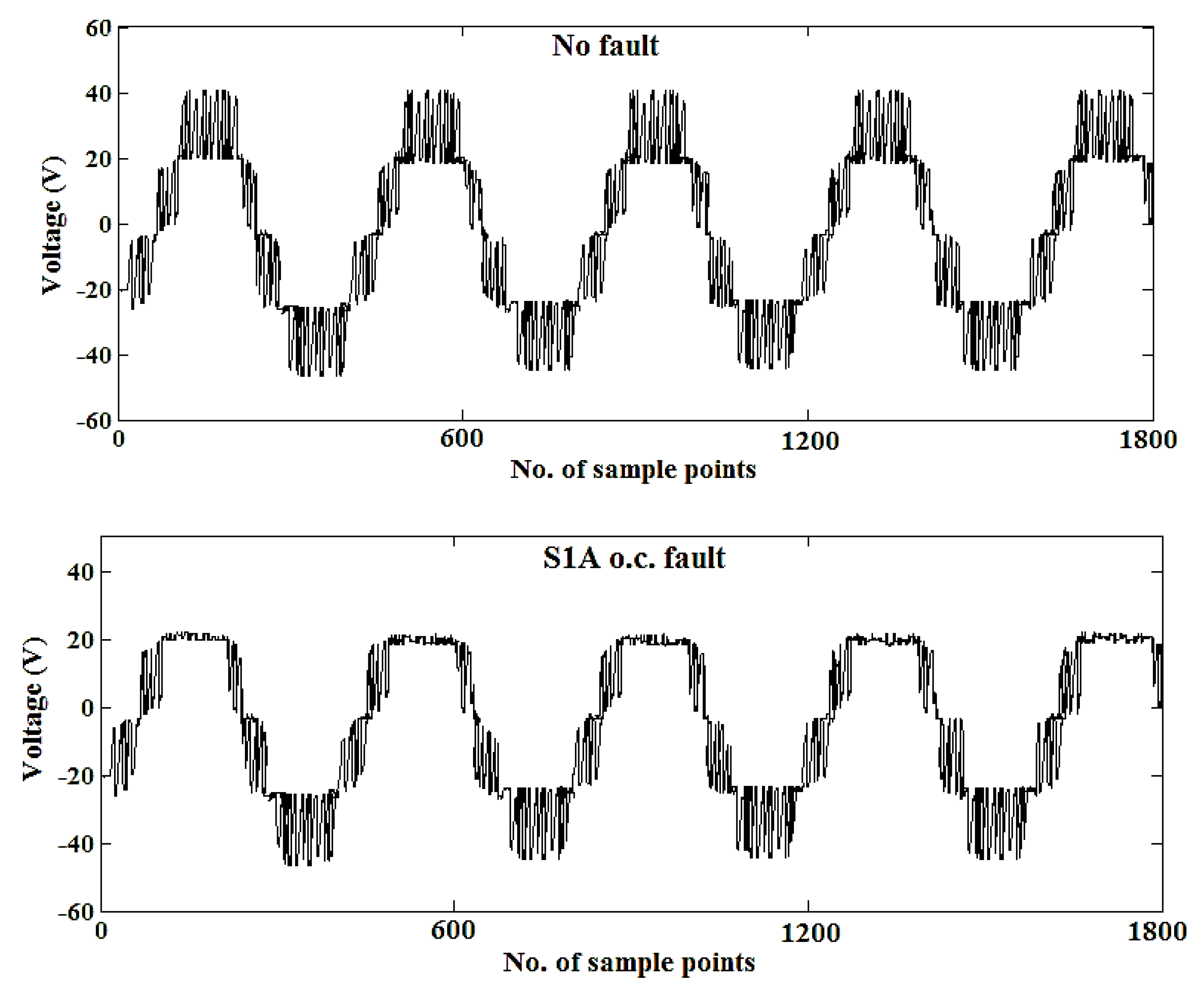
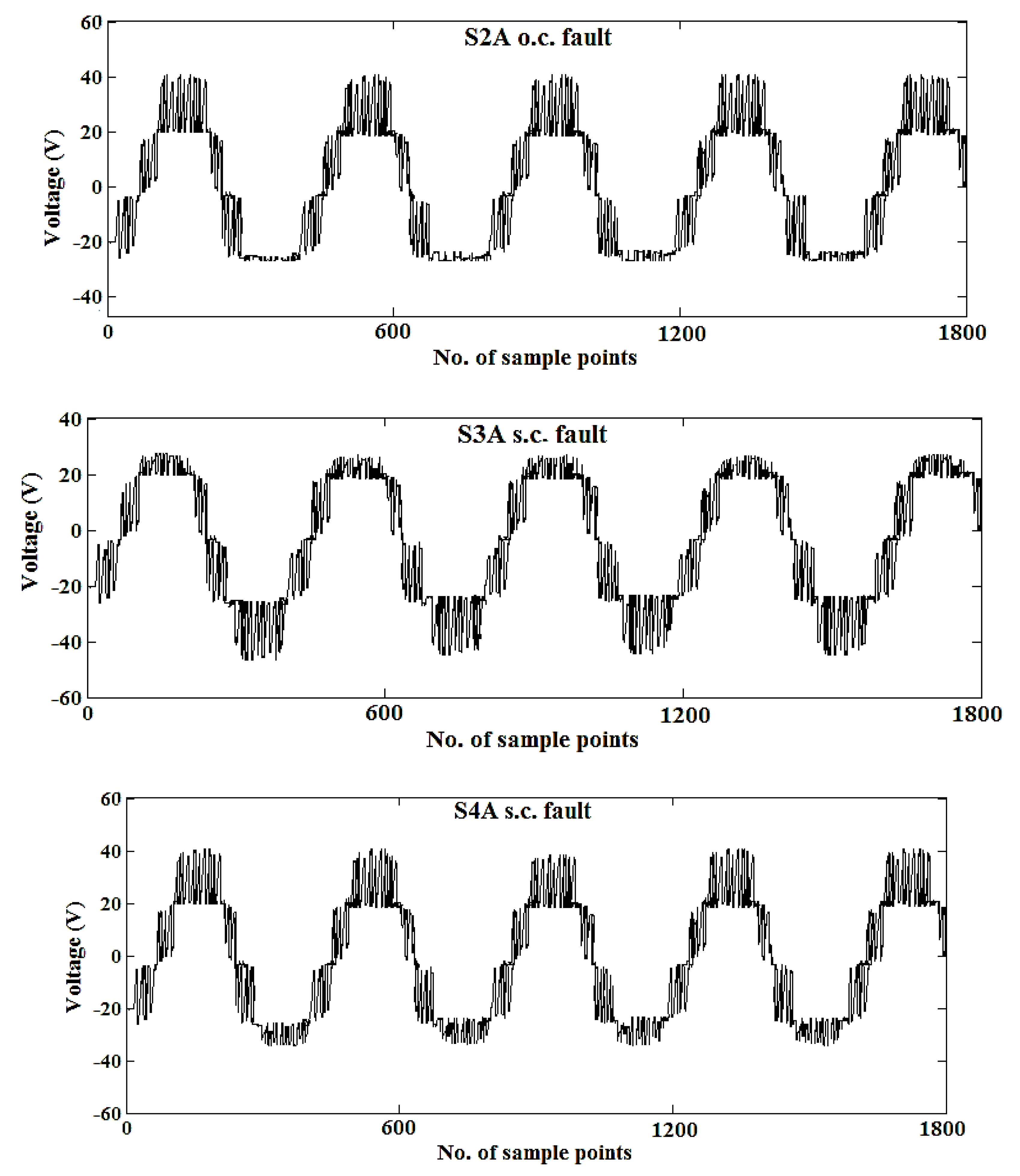

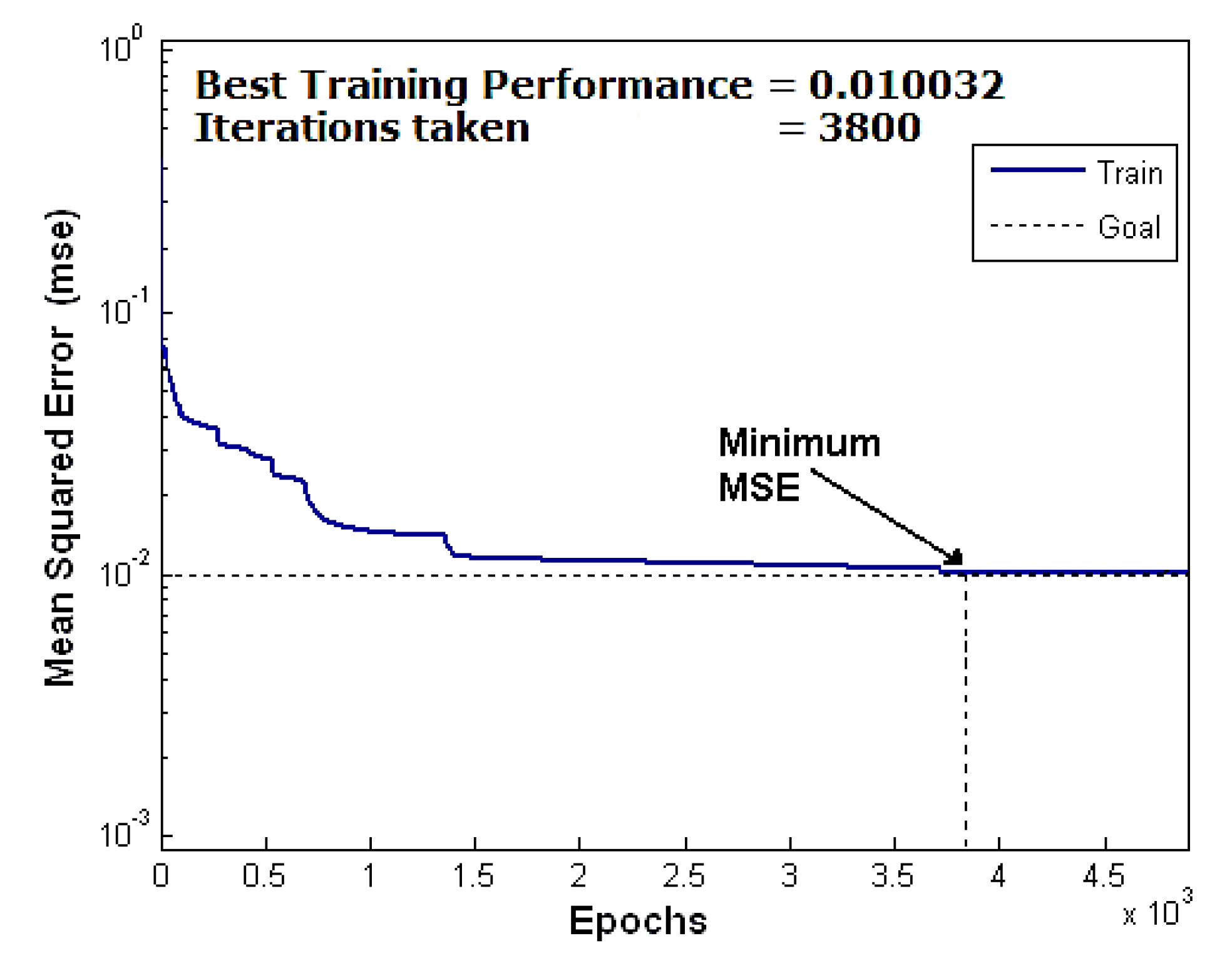
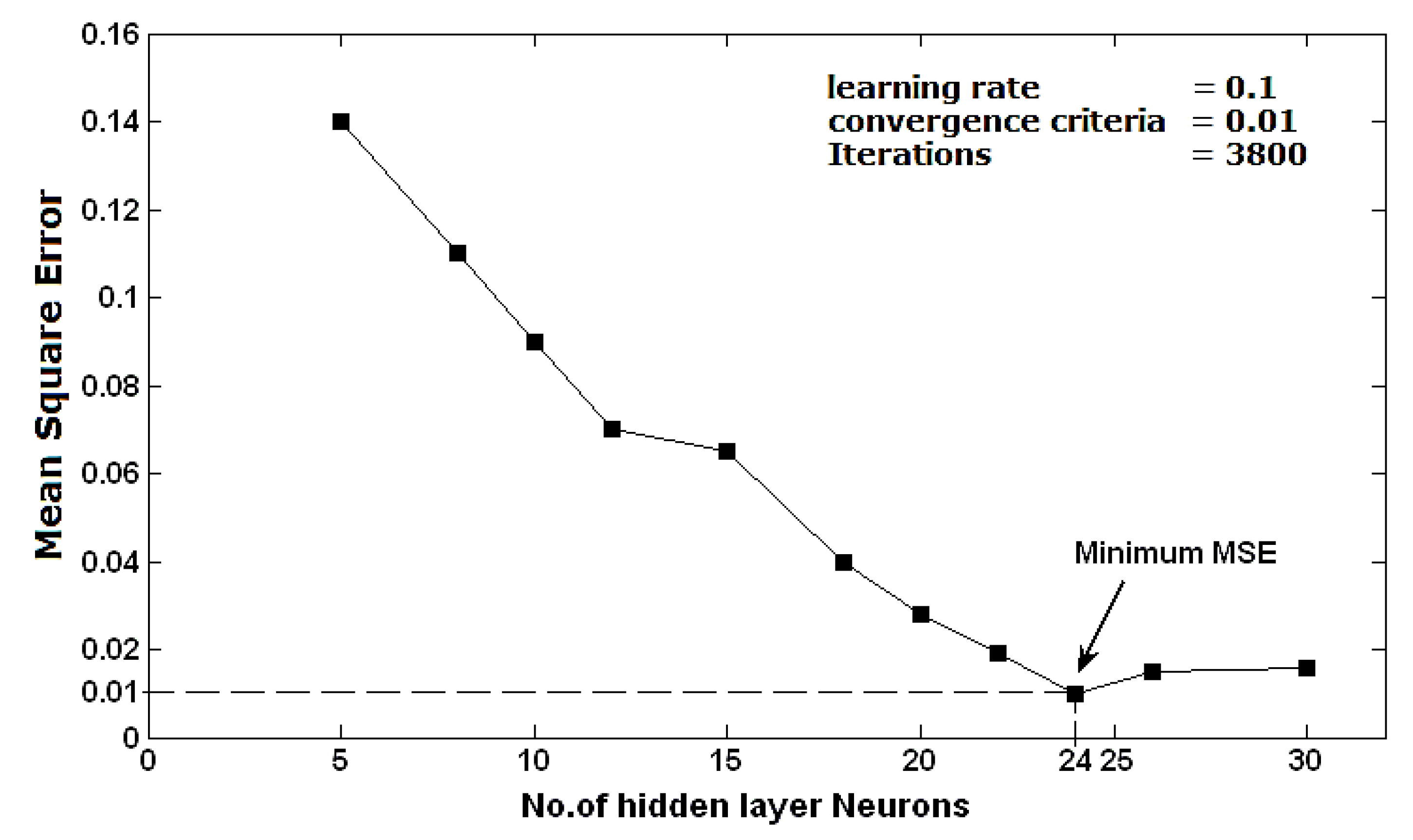
| No. of Inputs | 12 |
| No. of Neurons in Hidden Layer | 24 |
| No. of Neurons in Output Layer | 9 |
| Learning Rate (η) | 0.1 |
| No. of Iterations | 3800 |
| No. of Training Sets | 200 |
| No. of Test Input Sets | 150 |
| Convergence Criteria | 0.01 |
| Classification of Fault | Position of Neuron | Output Pattern |
|---|---|---|
| No fault | 1 | [ 1 0 0 0 0 0 0 0 0 ] |
| S1A fault | 2 | [ 0 1 0 0 0 0 0 0 0 ] |
| S1B fault | 3 | [ 0 0 1 0 0 0 0 0 0 ] |
| S2A fault | 4 | [ 0 0 0 1 0 0 0 0 0 ] |
| S2B fault | 5 | [ 0 0 0 0 1 0 0 0 0 ] |
| S3A fault | 6 | [ 0 0 0 0 0 1 0 0 0 ] |
| S3B fault | 7 | [ 0 0 0 0 0 0 1 0 0 ] |
| S4A fault | 8 | [ 0 0 0 0 0 0 0 1 0 ] |
| S4B fault | 9 | [ 0 0 0 0 0 0 0 0 1 ] |
| Classification of Fault | Identification Rate (%) at Different Number of Hidden Layer Neurons | ||
|---|---|---|---|
| 15 | 20 | 24 | |
| No fault | 100 | 100 | 100 |
| S1A fault | 91 | 92 | 100 |
| S1B fault | 93 | 95 | 100 |
| S2A fault | 92 | 95 | 100 |
| S2B fault | 91 | 92 | 100 |
| S3A fault | 95 | 95 | 100 |
| S3B fault | 92 | 96 | 100 |
| S4A fault | 93 | 95 | 100 |
| S4B fault | 92 | 94 | 100 |
© 2020 by the authors. Licensee MDPI, Basel, Switzerland. This article is an open access article distributed under the terms and conditions of the Creative Commons Attribution (CC BY) license (http://creativecommons.org/licenses/by/4.0/).
Share and Cite
Kiran Kumar, G.; Parimalasundar, E.; Elangovan, D.; Sanjeevikumar, P.; Lannuzzo, F.; Holm-Nielsen, J.B. Fault Investigation in Cascaded H-Bridge Multilevel Inverter through Fast Fourier Transform and Artificial Neural Network Approach. Energies 2020, 13, 1299. https://doi.org/10.3390/en13061299
Kiran Kumar G, Parimalasundar E, Elangovan D, Sanjeevikumar P, Lannuzzo F, Holm-Nielsen JB. Fault Investigation in Cascaded H-Bridge Multilevel Inverter through Fast Fourier Transform and Artificial Neural Network Approach. Energies. 2020; 13(6):1299. https://doi.org/10.3390/en13061299
Chicago/Turabian StyleKiran Kumar, G., E. Parimalasundar, D. Elangovan, P. Sanjeevikumar, Francesco Lannuzzo, and Jens Bo Holm-Nielsen. 2020. "Fault Investigation in Cascaded H-Bridge Multilevel Inverter through Fast Fourier Transform and Artificial Neural Network Approach" Energies 13, no. 6: 1299. https://doi.org/10.3390/en13061299
APA StyleKiran Kumar, G., Parimalasundar, E., Elangovan, D., Sanjeevikumar, P., Lannuzzo, F., & Holm-Nielsen, J. B. (2020). Fault Investigation in Cascaded H-Bridge Multilevel Inverter through Fast Fourier Transform and Artificial Neural Network Approach. Energies, 13(6), 1299. https://doi.org/10.3390/en13061299






